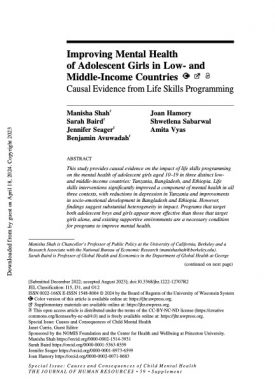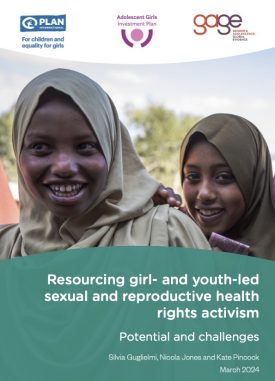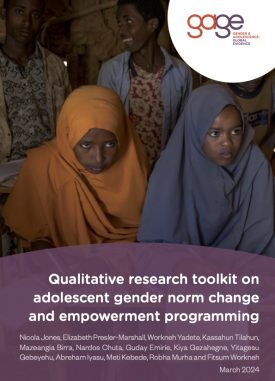There is increasing evidence that social protection programmes, particularly cash transfers, have positive impacts on human development and well-being, including that of adolescents. However, to date adolescence (10–19 years) has been under prioritised by programme designers compared to early childhood. In particular, given the increasing salience of gender norms over the course of adolescence, too little attention has been paid to the ways in which age- and gender-related vulnerabilities intersect to limit girls’ and boys’ multidimensional capabilities.
This policy note explores why upholding the promise of the Sustainable Development Goals’ (SDGs) ‘leave no one behind’ agenda will necessitate adopting a wider perspective on adolescents’ well-being — ensuring that social protection programme design and implementation is informed by an understanding of specific life-cycle, gender and other intersecting vulnerabilities — and outlines key actions that are critical to achieving gender and adolescent-responsive social protection programmes.
Suggested citation
Jones, N. and Presler-Marshall, E. (2019) ‘Achieving social protection for all adolescents: how can a gender norms lens support more effective programming?’ Policy Note. London: Gender and Adolescence: Global Evidence. (https://www.gage.odi.org/publication/achieving-social-protection-for-all-adolescents-how-can-a-gender-norms-lens-support-more-effective-programming/)


